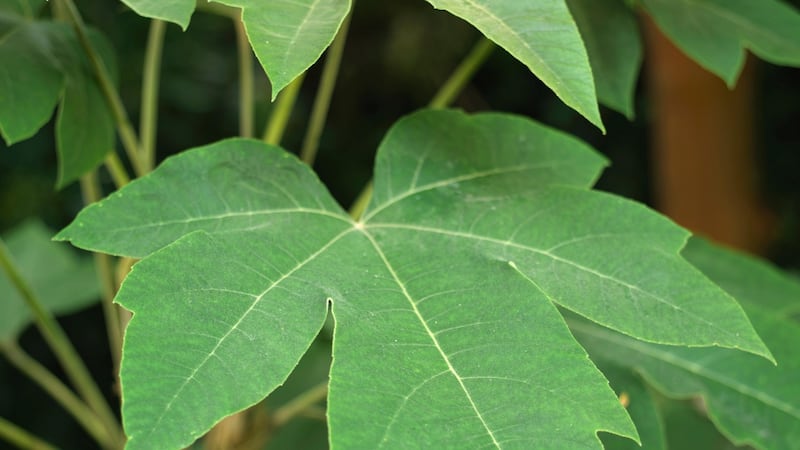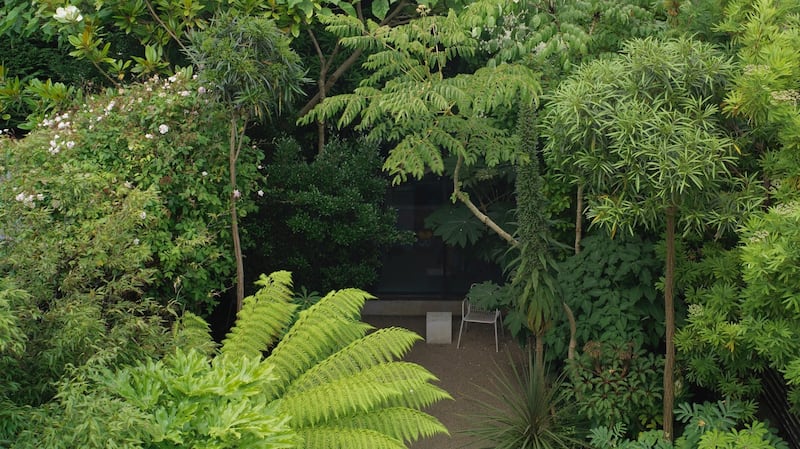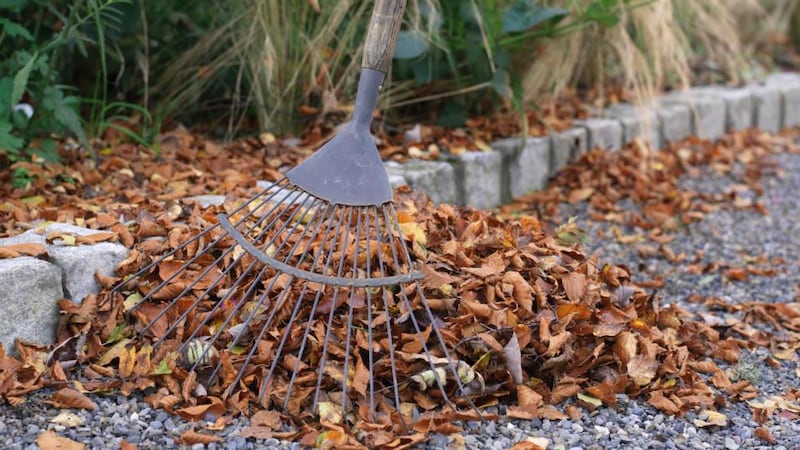Continuing our Horticultural Agony Aunt’ mini-series...
“Help! While my small, shady garden looks okay during the summer months, it turns into a mess come autumn. As I work from home, I’d love to make it a space that I can enjoy all-year-round using lots of interesting evergreen foliage plants. Any tips?” (Dublin reader)
The older I get, the more I appreciate that foliage is the unsung hero of every great garden, the glue that sticks it all together. The good news for owners of shady gardens like yourself is that many of the most beautiful foliage plants are also shade-lovers that are more than happy to grow in low-light conditions where their leaves won’t be singed by bright sunlight and the cooler soil temperatures suit their root systems right down to the ground.
That said, there are different kinds of shady gardens. The easiest – at least from a gardener’s point of view – are those that can offer plants dappled shade (as opposed to deep shade) and a cool, friable, humus-rich, moisture-retentive soil reminiscent of a damp woodland. The most difficult are those with poor, dry soil that sit in permanent heavy shade; typically these gardens are north-facing and under the deep shadow of nearby tall buildings.

But even in this case, there’s much you can do to dramatically improve growing conditions by adding wheelbarrows of well-rotted manure, homemade compost, crumbly leaf mould and sprinkles of powdered seaweed to the ground before planting. Continue with annual, humus-rich mulches of the same and you’ll soon see a dramatic improvement in your soil’ s structure and fertility.
Deep shade
There are also clever ways to help more light gently filter into the darkest of gardens. For example, if yours is in deep shade throughout the day, take a long, hard look at any nearby large trees or shrubs to see if their dense leaf canopy could be reduced. An example is "skirt lifting" as it's somewhat cheekily termed in the horticultural world, a useful method of creatively pruning large specimen trees and shrubs by removing some of their lower branches. This allows light to filter into shady spaces, opens up views, frees up growing space beneath their canopy and, when done well, can transform a very ordinary-looking plant into one that is satisfyingly sculptural. It's particularly suitable for evergreen plants such as photinia, yew, bay, myrtle, osmanthus, holly, eleagnus, bay, cotoneaster, phillyrea and Scots pine. For more detailed information (and I promise you that it's satisfyingly easy as well as quick), get your hands on a copy of The Creative Art of Pruning by Jake Hobson.

When it comes to your choice of plants for your shady garden, focus on those that can offer a visually pleasing combination of contrasting textures, colours and foliage shape throughout the year. For example, evergreen grasses that will grow quite happily in dappled shade include Chionochloa rubra (despite its size, this is also very happy in a large pot), pheasant grass (Anemanthele lessoniana), and Stipa tenuissima. A host of evergreen ferns are also suitable, from the statuesque tree fern, Dicksonia antartica (but only if your garden is a sheltered one in a milder part of the country) to various species of Polystichum (P. polyblepharum, P. munitum P. setiferum), Woodwardia radicans and Dropteris erythrosora. You'll find many of these ferns for sale in good garden centres but for the widest choice, get in contact with Billy Alexander of Kells Bay gardens and specialist nursery in Co Kerry, who supplies a huge range of different species (see kellsbay.ie) while Dublin-based Mount Venus Nursery (mountvenusnursery.com) is another excellent supplier of these and other shade-loving woodlanders.
Shrubby plants
Other lovely, leafy evergreen shrubby plants suitable for a shady garden include some of the smaller, clump-forming types of bamboo (Fargesia murieliae, Fargesia nitida, Fargesia jiuzhaigou). Again, you'll find these in good garden centres but for the widest choice, get in touch with Peter Stam of the Waterford-based specialist bamboo nursery, Stam Bamboo (stambamboo.com).

Bamboos add a tropical air to any sheltered, shady garden, as do other evergreens with large or sculptural leaves such as Astelia chathamica, Schefflera taiwaniana, Pseudopanax crassifolius and Tetrapanax papyrifera. But if tropical isn’t your thing, then go for some of the more conventional shade-tolerant shrubby plants such as choisya, mahonia, pittoporum, skimmia and ceanothus. All of these are quite large shrubs that will help to form the upper and middle planting layer in your garden, so allow them sufficient space to mature. But bear in mind that clever pruning techniques such as those mentioned above will allow you to manipulate their size and reduce their overall bulk, providing more space for the ground/ lowest layer of plants. Suitable evergreen choices for the latter include hellebores, the smaller species of ferns and grasses, epimediums, liriope, vinca, ajuga, vancouveria and Saxifraga stolonifera.
Last but definitely not least, a gentle word of caution. While evergreen foliage plants perform a vital role in keeping a garden “furnished” throughout the autumn, winter and early spring months, too many of them in a garden inevitably have a deadening effect, making it feel static – even claustrophobic – as well as lacking in seasonal interest. So ring in the changes by adding some shade-loving deciduous or herbaceous varieties. Examples include lady’s mantle (a summer-flowering perennial that will tolerate every kind of shade), Geranium macrorrhizum, rodgersia, brunnera, hydrangea, astrantia, Japanese anemones, Anemone nemorosa, woodruff (Galium odoratum), Cyclamen hederifolium, Milium effusum Aureum and some of the smaller, herbaceous kinds of ferns including species of Athyrium, Matteuccia and Dryopteris filix-mas. Finish off with a few sprinkles of snowdrops and you’re good to go.

THIS WEEK IN THE GARDEN
Continue to clear fallen leaves of deciduous trees and shrubs from paths and steps where they could be hazardous. Placed in a black bag (puncture a few holes in it for drainage) and left somewhere cool, shady and relatively dry (for example, under the cover of a tree/hedge), they’ll eventually rot down into leaf mould and can then be used as an excellent soil conditioner. Alternatively, you can add them as a carbon-rich layer to your compost heap. Fallen leaves can also be a problem on the roofs of glasshouses and polytunnels at this time of year. In this case, use a soft sweeping brush or a leaf-blower to remove them.
The only leaves that you shouldn’t add to your compost heap or use to make leaf mould are those that are diseased as these could potentially re-infect the fresh, new foliage on plants come springtime. An example is any leaves infected with blackspot, a common fungal disease of roses that overwinters on any fallen foliage as well as on any infected leaves lingering on the plant. In this case, collect these from around the base of the plant and then do your best to pick any obviously diseased leaves off the branches before binning or burning them.
November marks the beginning of the bare-root season, when many plants can be bought for a fraction of the price that you’d pay for them as pot-grown specimens. While it’s important to get bare-root plants into the ground as quickly as possible to avoid damage to the plants’ fine root hairs, it’s also important to pick a time when soil condition are good (not waterlogged, not frozen) and the weather is dry. When/if unfavourable weather conditions mean that you have to postpone planting, make sure to temporarily protect the delicate root systems of any recently purchased bare-root plants by spraying them gently with water and then placing them up to their waists in a plastic bag tied as securely as possible to avoid evaporation. Put this somewhere cool, shady but frost-free until soil/weather conditions improve.
DATES FOR YOUR DIARY
Today (Saturday November 18th, 2pm), National Botanic Gardens, Glasnevin, Dublin 9, an illustrated talk by author and taxonomist Dr Charles Nelson on behalf of the Irish Society of Botanical Artists on the history of Irish botanical illustration from the 18th century to the present day. botanicgardens.ie
Also continuing at the National Botanic Gardens until Wednesday, December 6th, Another Bite of the Cherry, an exhibition of new work by more than 50 artists, all inspired by the flora/landscape of Ireland's historic botanic gardens at Glasnevin. All works for sale €180 unframed/€225 framed. graphicstudiodublin-shop.squarespace.com















